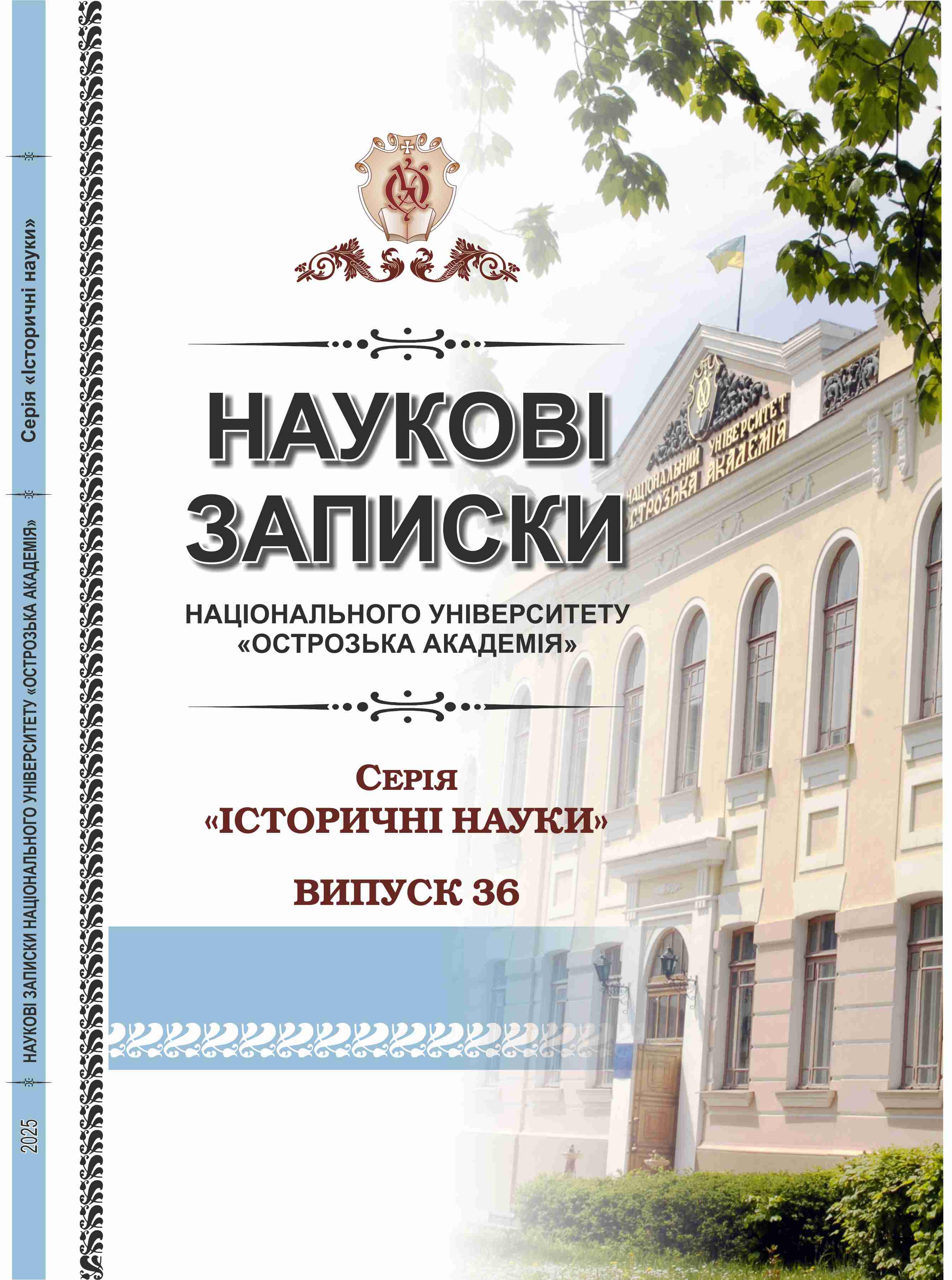REVISION CENSUS OF CHRISTIAN AND JEWISH BURGHERS OF OSTROH IN 1795: INFORMATIONAL POTENTIAL AND RESEARCH OPPORTUNITIES
Keywords:
revision census, burghers, population, Christians, Jews, Ostroh, Ostroh region, VolhyniaAbstract
The article is dedicated to analyzing the informational potential of the 1795 Ostroh census as a descriptive and statistical source of state origin. The structure and content of the source have been thoroughly examined and presented in tabular form. Based on the existing historiography of such documents, precise terminology, classification, and the procedure for compiling the analyzed census have been determined. It was established that the census was compiled by representatives of the petty, landless nobility of Ostroh, who held positions in the city administration.
The 1795 Ostroh census consists of 13 parts, each providing information on a specific section of the city. Based on the analyzed source, it has been possible to trace the urban topography of the late 18th century. As of 1795, Ostroh’s territory included the old town, the new town, and the suburbs, including Vulytsia Ostrozka. The census reflects the deepened property division of the city during the 1770s–1790s. The old town (ordinational part, Jesuit jurisdiction, the Jabłonowski princes’ jurisdiction, Kordashivka, and Vulytsia Ostrozka) and the new town were divided among the magnate and noble families of Jabłonowski, Czacki, and Brzostowski. By 1795, according to the source, the Jabłonowski princes had partially extended their ownership rights to the estates of the former Ostroh Ordinance, which would ultimately lead to the full unification of the city under the Jabłonowski family in the early 19th century.
Using the census data, an attempt has been made to reconstruct the social structure of Ostroh’s society in 1795. The upper stratum comprised the nobility, divided into two categories: landed and landless. The landed nobility, by hereditary rights, owned parts of the city and included the aforementioned magnate and noble families. The landless nobility resided on the estates of landowners under agreements to pay monetary rent (czynsz) or serve them. The burghers of Ostroh, who formed the middle stratum of social stratification, were artisans, merchants, and traders. The census also provides information about the urban poor, which included unskilled laborers performing the hardest physical work (construction, repairs, manufacturing) and beggars who lived on alms and donations. The latter constituted a minor percentage of the population.
New information on the ethno-religious composition of the urban population has been obtained and analyzed. The largest ethnic groups were Jews, Ukrainians, and Poles, with smaller groups of Germans. Jews formed the majority of the population, united by their self-governing body, the kahal. Their primary activity in the city was trade, facilitated by favorable factors such as geographic location, profitable trade routes, and connections with foreign markets. The census reveals the names and surnames of kahal leaders. Ukrainians, though smaller in number, predominated in artisanal circles. Poles held the third position in the ethno-religious structure and were primarily responsible for city governance. Germans were represented by only one family residing in Ostroh.
The author draws attention to the historical-demographic information provided by the source. Although the document is partially damaged and does not ensure completely reliable results, it highlights the importance of using additional sources to refine demographic data. Despite its imperfections, the 1795 census allows for the collection of essential accounting data for demographic research, such as determining the average number of burghers per household, age groups, and their proportional distribution.
The 1795 Ostroh census offers wide-ranging research opportunities and serves as a valuable addition to the source base for studying socio-economic and political history, historical demography, and genealogy. Consequently, the importance of archival searches to discover additional census records from the Volhynia Governorate increases, as they could enhance historical studies in the fields of Ostrohiana and Volhyniana of the late 18th and early 19th centuries.

